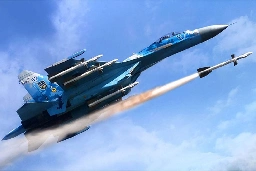Ukraine and Lessons Learned for Airpower and Spacepower
Ukraine and Lessons Learned for Airpower and Spacepower
This episode comes to you from Ramstein Air Base, where Ryan spoke with Gen. James Hecker of the U.S. Air Force and Air Marshall Johnny Stringer of the

Submission Statement
This 45 minute interview of two senior officers synthesizes some of their takeaways from a NATO meeting regarding lessons learned from Ukraine. Takeaways include:
-Air superiority is key to choking off logistics and ensuring fast victory. Russia failed to achieve this air superiority because of a lack of joint operations and failure to evolve beyond its platforms. Russia's air force's sum was less than its parts.
-Air access--use of air assets strategically in a contested environment for maximum effect.
-Building broad-based counter-A2AD capabilities in NATO is a major priority. Want to avoid brutal artillery slog like in Ukraine.
-Private space power is making access to space cheaper and more important than ever. Starlink has been critical for Ukrainian efforts, but other space capabilities have been important as well. Space is likely to grow more contested--it's key to develop defensive and offensive capabilities in this area. Commercial satellite imaging has democratized access and understanding of the war like never before.
-Low-end munitions(eg drones) + networking blur the line between unmanned systems and precision weapons.
-Collaborative Combat Aircraft will work with F-35s, including those of NATO partners. Idea is still being finalized, may include countermeasures, weapons load, sensors, etc. while being more expendable than a manned aircraft.
-Russians may see their cruise and ballistic missiles as an asymmetric advantage at the moment. A more complex air environment overall demands a more layered approach. Ex: unexpected resurgence of gun-based AD.
-Deeper magazine depths are critical, perhaps more important than being at the absolute cutting edge. Quantity gives leeway in being able to use capabilities more freely.
-Information sharing is another priority. US went from sharing 30 points of interest a month with NATO partners to sharing 3,000 a month with a stroke of a pen. More to be done in other areas, like F-35 info sharing.
-Dispersal of units is getting more focus. The rise of precision munitions means that aircraft must be dispersed across multiple airbases. Locations are changed to remain inside of the enemy's decision cycle.
This is a podcast, if you are looking for a similar resource in text form, I highly recommend RUSI's article "The Russian Air War and Ukrainian Requirements for Air Defence".
This episode comes to you from Ramstein Air Base, where Ryan spoke with Gen. James Hecker of the U.S. Air Force and Air Marshall Johnny Stringer of the Royal Air Force about what we can learn from airpower and spacepower almost a year and a half into the war in Ukraine.